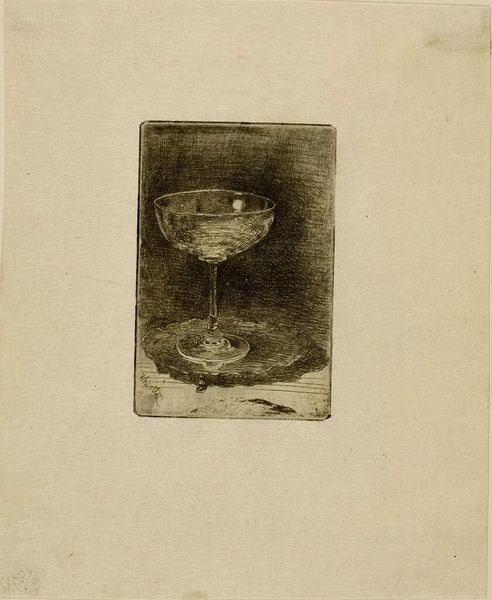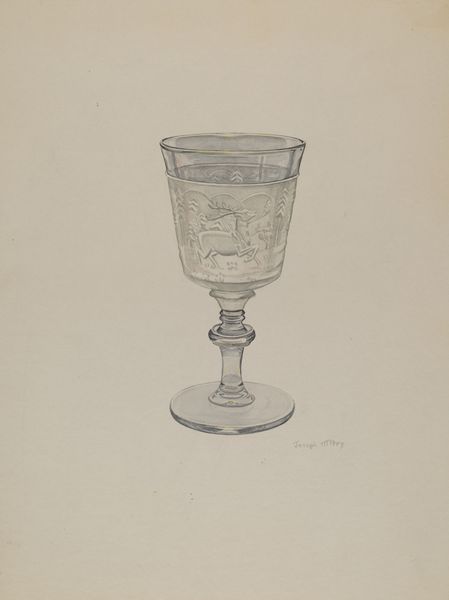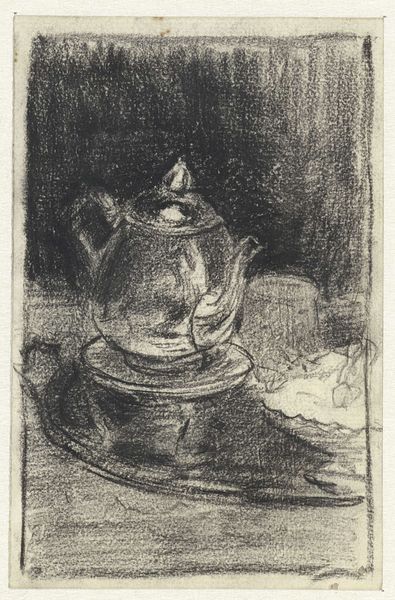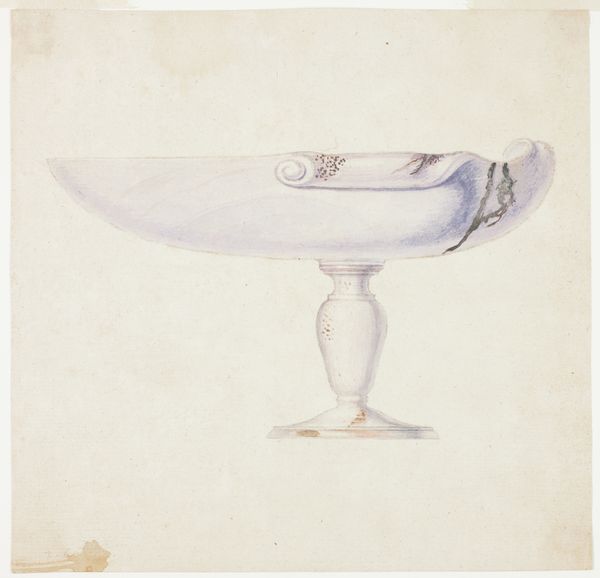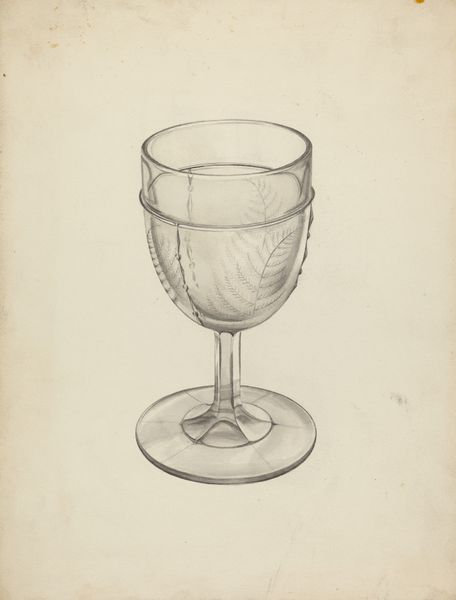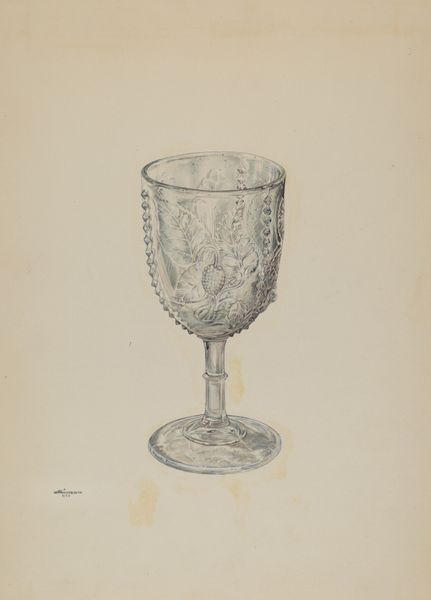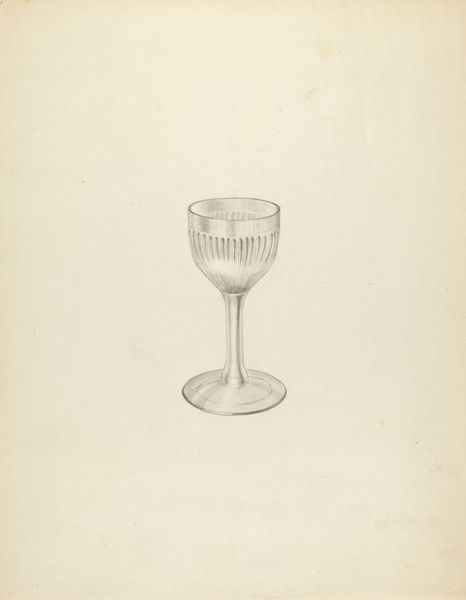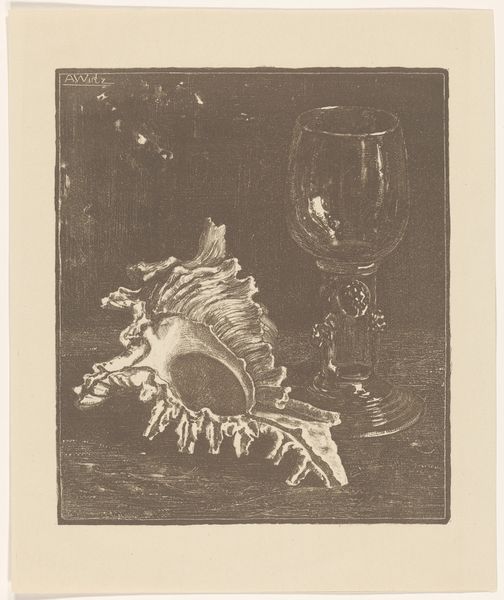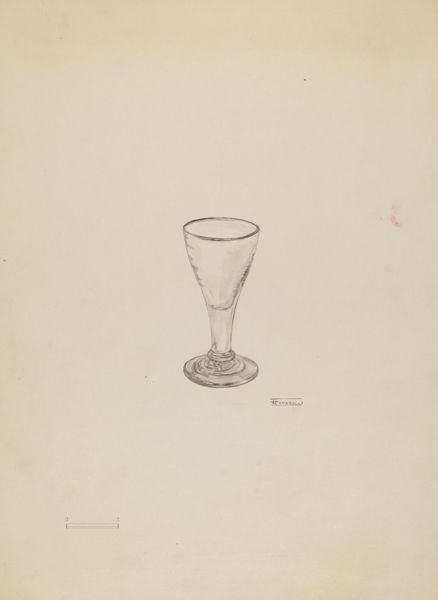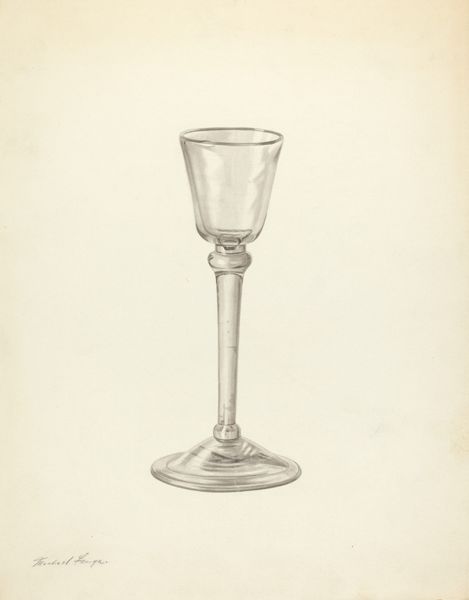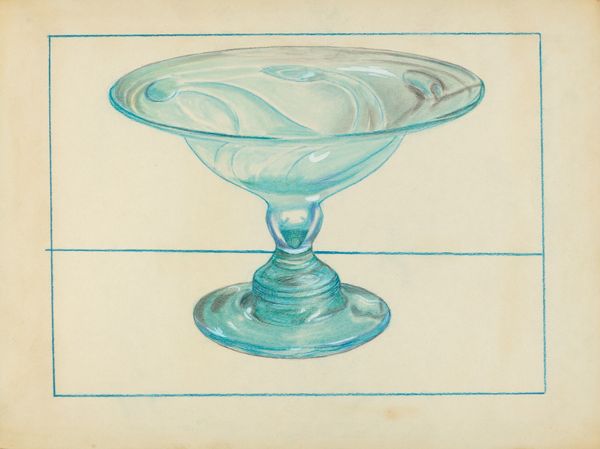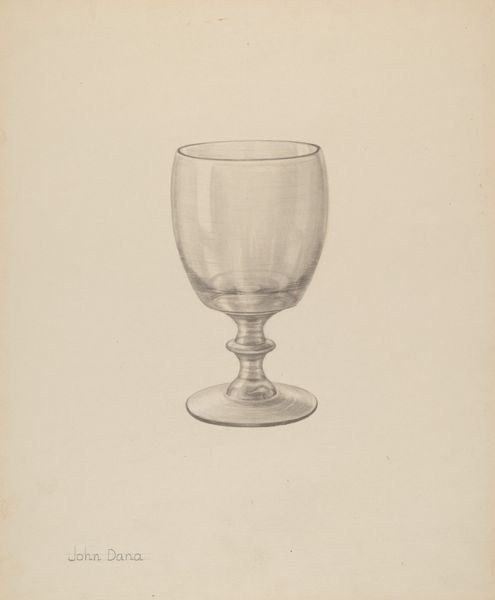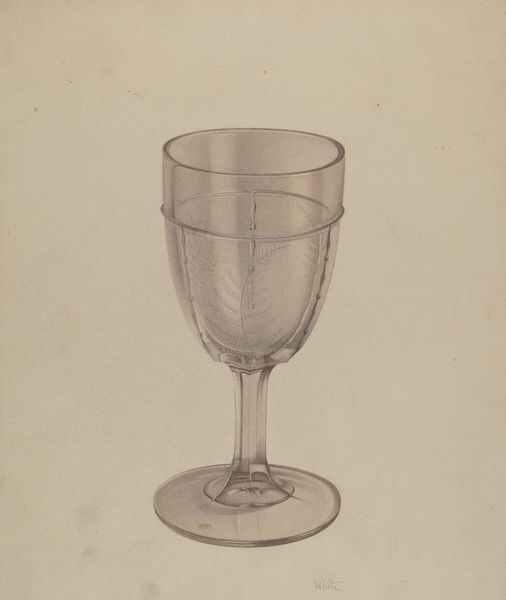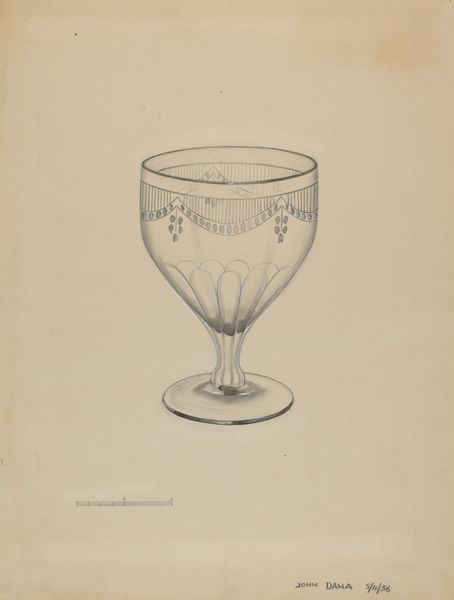
print, etching, glass
# print
#
etching
#
glass
#
realism
Dimensions: height 83 mm, width 55 mm
Copyright: Rijks Museum: Open Domain
This small etching by James Abbott McNeill Whistler at the Rijksmuseum depicts a simple wine glass with a striking clarity against a shadowed background. The wine glass is not merely a vessel; it is a symbol, charged with centuries of cultural meaning that far precedes its use in Whistler's time. Consider how the imagery of the chalice or cup echoes through history, from the Holy Grail in Arthurian legends to the communion cup in Christian rites. These earlier symbols of the cup are about transformation. This simple wine glass distills these ideas, evoking notions of celebration, community, and even transformation, as wine itself was once seen as a sacred, transformative substance. The shadowed background also carries significant weight. It provides a contrasting duality between light and darkness that has been a persistent motif in art and the subconscious. This is an interplay that reflects the human psyche, a perpetual negotiation between conscious clarity and the mysterious shadows of the unconscious. The wine glass, rendered with such precision, stands as a beacon in the darkness. It is a testament to how simple forms can carry profound, enduring cultural significance.
Comments
No comments
Be the first to comment and join the conversation on the ultimate creative platform.
